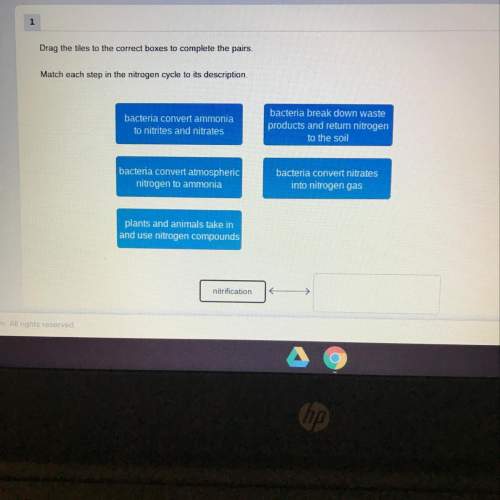
A true-breeding white strain of flower was crossed with a true-breeding orange strain. All of the F1 progeny were white in phenotype. When the F1 offspring were crossed with one another, the following offspring phenotype frequencies were obtained in the F2 generation:
F2: 98 White
34 Orange
11 Yellow
Using this information, postulate the role of mutant genes and their products in producing the observed phenotypes:
(a) designate alleles and give the general genotypic formula for parental strains and the F1,
(b) give the general genotypic formula that defines each color class and
(c) explains the phenotypic ratio obtained [say what it is] (See attached Table 1), AND
(d) diagram/draw a metabolic pathway that explains the formation of each pigment (or lack thereof).

Answers: 2


Another question on Biology

Biology, 21.06.2019 20:50
Next pretest: evolution select the correct answer in a laboratory population of flies, the female flies are gray and the males are yellowish gray. biologists observed that all the male flies had an equal chance for reproduction, but the male flies with the brightest colors were more likely to successfully reproduce. what phenomenon could explain such a change? a sexual selection b. disruptive selection c. stabilizing selection d. directional selection
Answers: 1

Biology, 22.06.2019 02:00
The accompanying figure shows the percent of selected dna sequences that match between a chimpanzee and other primates. these data support the hypothesis that the figure shows the percentage of selected d n a sequences that match between the chimpanzee and other primates. the human has an almost 98 percent match, the gorilla has an almost 97 percent match, the orangutan has a 96 percent match, the gibbon has an almost 95 percent match, and the old world monkey has an almost 92 percent match. the accompanying figure shows the percent of selected dna sequences that match between a chimpanzee and other primates. these data support the hypothesis that the figure shows the percentage of selected d n a sequences that match between the chimpanzee and other primates. the human has an almost 98 percent match, the gorilla has an almost 97 percent match, the orangutan has a 96 percent match, the gibbon has an almost 95 percent match, and the old world monkey has an almost 92 percent match. chimpanzees and gibbons are the most closely related the chimpanzee's closest surviving relative is humans orangutans are the primates least closely related to chimpanzees old world monkeys and gibbons are the most closely related
Answers: 1

Biology, 22.06.2019 14:00
Which diagram best represents the chromosomes that would be found in a two new skin cells produced as a result of this process?
Answers: 1

Biology, 22.06.2019 15:30
Me.henley said, “in the rat race we call life, only the strong will survive.” he may have been referring to
Answers: 1
You know the right answer?
A true-breeding white strain of flower was crossed with a true-breeding orange strain. All of the F1...
Questions







English, 15.11.2019 18:31

Health, 15.11.2019 18:31

History, 15.11.2019 18:31








Biology, 15.11.2019 18:31

Mathematics, 15.11.2019 18:31





